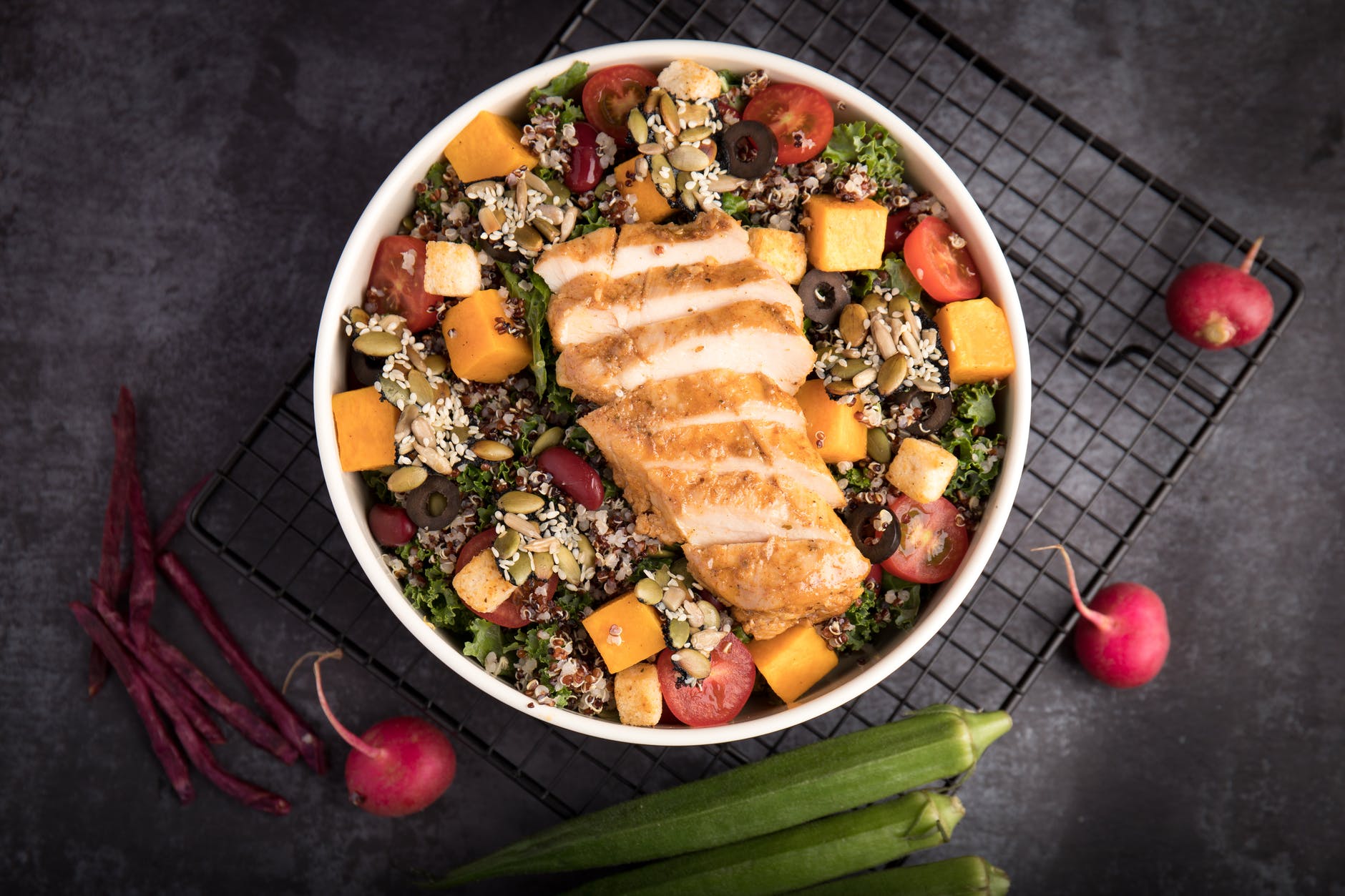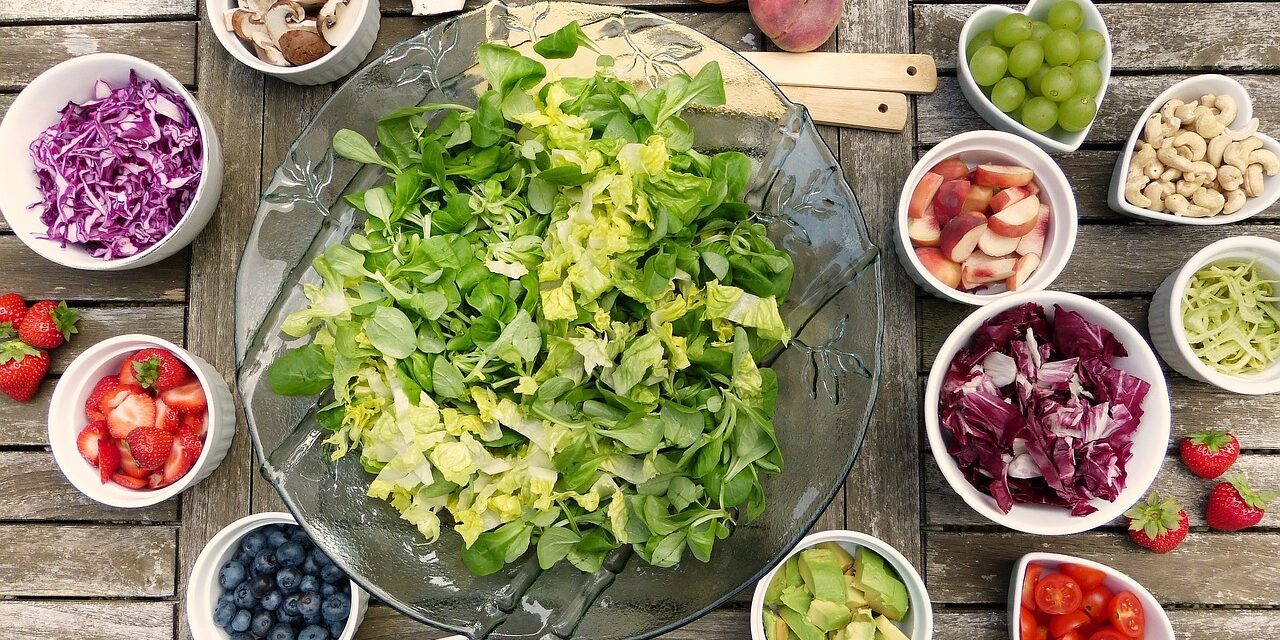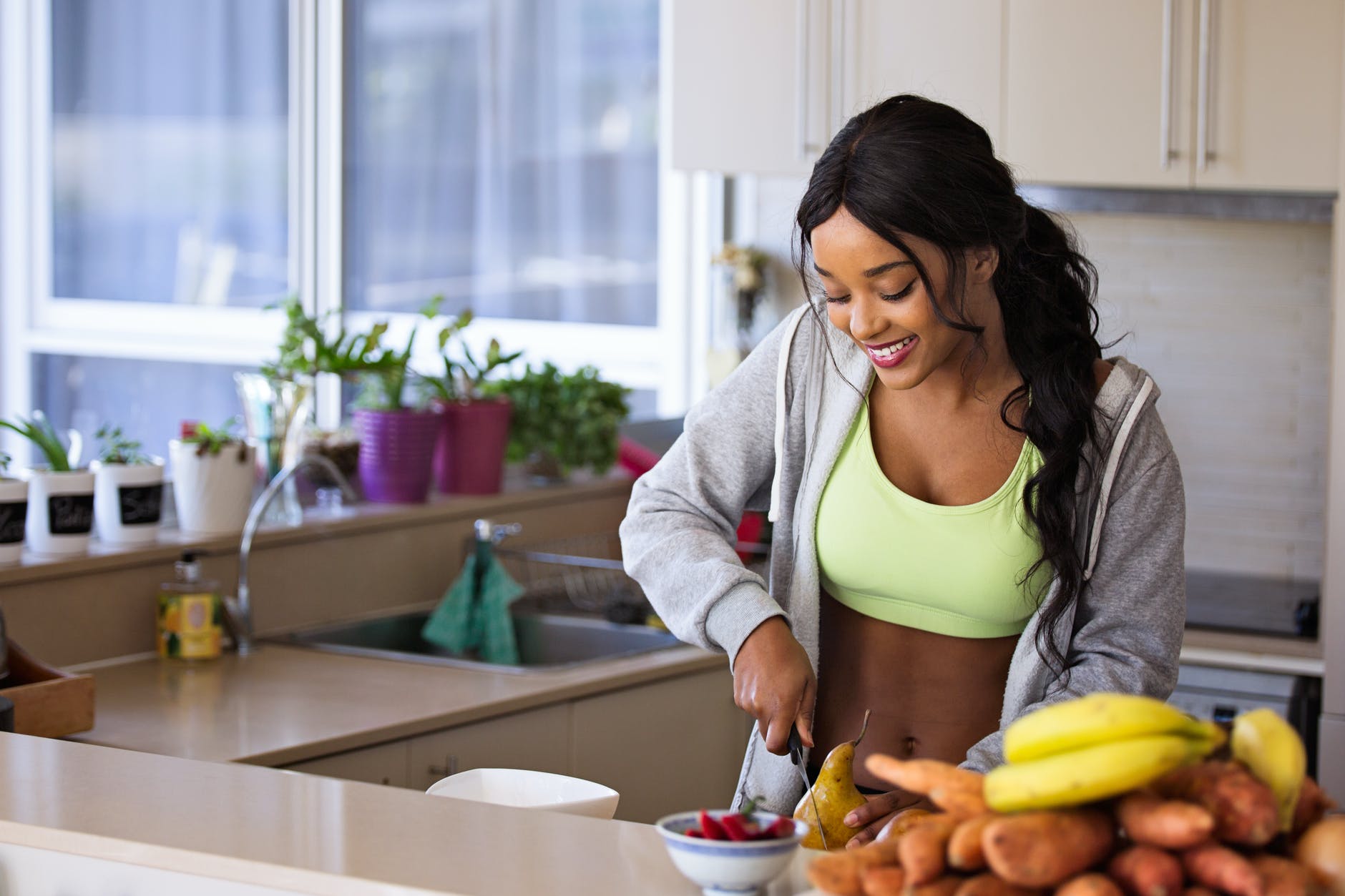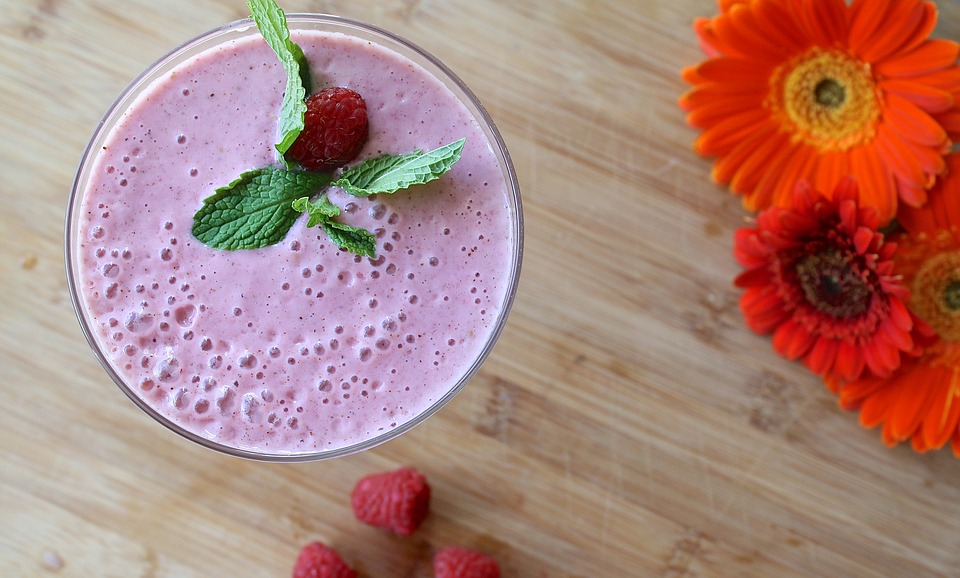This post may contain affiliate links, and as an Amazon Associate, Hercules Performance may earn from qualifying purchases.
Perhaps the single biggest mental shift a dieter can make is no longer thinking flavor is everything at every meal.
This isn’t to say you should have meals you hate (your diet won’t last)—but you also can’t be a high maintenance dieter and expect consistent results. There will be countless scenarios where you need to consciously choose a B- or C+ meal for the sake of:
– Getting micronutrients
– Improving digestion
– Feeling full
– Improving general health
– Reducing decision fatigue
And many of these meals will need to be loaded with vegetables—vegetables that aren’t lathered in butter or cheese or oil.
I’m talking plain broccoli and baby carrots.
I’m talking celery and sliced cucumbers. I’m talking diced onions and peppers. I’m talking lettuce and kale and arugula.
I’m talking about options that aren’t overly exciting or mouthwatering—especially when compared to donuts or pizza or wine—but this can’t be a big deal. Again, flavor can’t be your top priority at every meal if you want to lose fat. You will literally never succeed.
So let’s discuss the top ten strategies for increasing vegetable intake enough to:
– Shift your “flavor is everything” mindset
– Keep hunger and cravings at bay
– Bulk up low calorie meals to feel bigger
– Make you feel your absolute best
Which starts with a conversation about how many vegetables you actually need to eat.
Per usual, the answer is, “It depends.”
In a perfect world, you’d eat 3-5 servings per day. But recommending this to everybody is like recommending 10,000+ steps per day to everybody. You have no idea where somebody is at and how far this is from their current reality. If the gap is too big, we may never try to close it.

I’m not a fan of blanket recommendations like 10,000+ steps for everybody
So my initial vegetable intake recommendation is “more than you’re eating now.”
If you don’t eat vegetables, aim for one per day. If you eat them sporadically, aim for two. If you already eat two servings, aim for 3+. If you’re in the rare category of people who already eat 3+ servings per day, I’m pushing you to increase variety—which can expose you to nutrients you may be lacking.
The good news is, no matter which of these camps you fall into, the strategies for getting enough vegetables don’t vary all that much:
Strategy #1: Maintaining an open mind
Despite my mother’s best efforts, I “hated” vegetables as a child and refused to eat them with any meal. It was literally the first thing I looked for on any menu: that there weren’t vegetables with the entrée (or that I could easily pick them off my plate).
Fortunately, with a push from my first-ever nutrition coach, a nineteen-year-old Sam left this childish decision (to “hate” vegetables) behind and began having them with most meals. I certainly didn’t like them at first, but remained open to the process, and eventually learned to love them.
But it took 2+ years to learn how.
Most “vegetable haters” go the opposite route, verbally bashing them (saying they’re “gross” and “soggy”) and refusing to try any that aren’t submerged in two inches of cheese and olive oil. This close-mindedness sets them up to always have a negative experience with vegetables and never learn to like them.
Which is why the first thing you need to do is open your mind to an often lengthy transitional period of learning to like them.
Strategy #2: Being more patient
As I already alluded to, it’s unlikely that a single recommendation (ex. air frying your broccoli) will radically change your enjoyment of any vegetable. On the contrary, it’s going to take a lot of at-bats to learn to like more vegetables—but it IS possible.
According to Dr. Qian Yang, our sensitivity to intense flavors (ex. bitterness) decreases as we age, leaving us room to enjoy foods we once “hated” as children. We just need to be patient about it.
And even if you never learn to truly love vegetables, you CAN learn to tolerate them after experiencing the benefits—similar to how many people learn to “like” (or at least tolerate) the bitterness of black coffee after experiencing the energy-boosting benefits. My buddy Mike filmed a hysterical video on this:
It’s also worth pointing out how many people are willing to drink alcohol that literally makes them gag in order to experience a specific outcome (getting buzzed or drunk). If you fall into this camp, you can’t suddenly have the world’s highest standards for flavor when there’s a green bean on your plate.
Strategy #3: Planning extremely well
The average “unaltered” diet is extremely low in protein because most lean protein sources (ex. egg whites, chicken, whey powder, ground turkey) require at least a little prep—and most people’s diets are abysmally low in vegetables for the same reason.
But the thing is, better days of eating won’t happen by accident (as I often remind my VIP Nutrition Coaching clients), and you’re going to need to put some level of effort into planning for them to happen. Some of my go-to strategies for making this seamless include:
✓ Buying frozen vegetables, as they have a longer shelf life than fresh ones, and you won’t feel as rushed to wolf them down—compared to say, a bag of fresh spinach that you’ll probably throw out on a weekly basis. My favorites frozen options are broccoli and stir fry mixes of any kind.
✓ Buying pre-cut vegetables, which frozen ones often are, anyway—as this will reduce friction between you and having them with more meals. You can get onions, peppers, carrots, broccoli, and cauliflower like this, to name a few.
Although it’s worth noting that you’ll want to eat pre-cut vegetables faster than uncut ones (typically within 3-4 days), as they go bad faster.
✓ Planning next-day nutrition before bed, based on what you’ve brought home from the store that week. This is something I have all my VIP Nutrition Coaching clients do, as it takes all the guesswork out of a successful day. The vast majority of them use MyFitnessPal for this.
Strategy #4: Prepping to prep
I consider planning, “prepping to prep,” and prepping to be different strategies. To clarify:
Planning occurs when you surround yourself with plenty of vegetable options, and choose which ones you’re going to have in advance. Prepping to prep—which we’ll discuss momentarily—involves partially prepping or portioning certain vegetables in advance, to make prepping and eating them easier. Prepping is when you actually cook, sauté, or air fry your vegetables for the meal you’re about to have.
Examples of prepping to prep include:
✓ Individually bagging baby carrots, small tomatoes, or sugar snap peas for meals and snacks a few days in advance. This turns them into easy grab-and-go options when you’re least motivated to eat well.
✓ Using a vegetable chopper to dice onions, peppers, tomatoes, and anything else you can sprinkle into your meals throughout the rest of the week. I personally use my Mueller vegetable chopper twice per week, and it ensures I get 5-8+ servings of vegetables without much effort.
✓ Pre-washing fresh vegetables so there’s one fewer step for you to take when preparing them after a long day at work.
Strategy #5: Prepping them well
While no strategy is inherently magical, knowing how to prep vegetables well is by FAR one of the most important skills you develop when trying to eat more of them—and I call it a skill because it’s exactly that: an ability you can develop over time.
I finally incorporated salads into my diet at nineteen years old and I’m still learning ways to make them taste better at twenty-six. So don’t make the mistake of thinking you’re a Pinterest recipe away from being a prep master.

I won’t sugarcoat it: this takes a ton of practice
Some of the easier prep styles include:
– Not prepping (raw)
– Air frying
– Baking
– Sautéing
– Steaming
✓ Some of my favorite vegetables to eat raw* are baby carrots, cucumbers (with a little sea salt), celery (with natural peanut butter), and spinach, arugula, and lettuce (in salads). Other options include sugar pea snaps, brussels sprouts, asparagus, sliced zucchini, and corn (when extremely ripe).
*Many people experience digestive issues when consuming raw vegetables (like brussels sprouts and green beans), so it’s important to pay attention to your individual response to each and adjust accordingly.
✓ Some of my favorite vegetables to air fry are broccoli, asparagus, and brussels sprouts—all of which cook well (typically around 400° for 6-12 minutes) with just a little olive oil and sea salt. Other options include zucchini, squash, mushrooms, and onions.
My wife and I use our GoWISE air fryer on a near-daily basis to keep prep time to a minimum.
✓ I typically bake the same vegetables I air fry in my oven, at ~400-425° for 15-20 minutes. It produces similar results, but takes a tad longer because the oven has to preheat (my air fryer doesn’t). This isn’t inherently bad, however, especially if you’re using the extra space on a pan to bake other sides (like chicken or sweet potatoes).
✓ You can also sauté a variety of vegetables on a pan with just a little bit of olive oil, or even an olive oil spray (like Pam). Popular options include sliced onions, peppers, zucchini, squash, pea, and carrots. Prep time varies, but typically falls within an 8-12 minute range on a medium to medium-high heat.
✓ Lastly, you can’t go wrong with steaming vegetables like broccoli, cauliflower, asparagus, green beans, squash, zucchini, carrots, and mushrooms, as they’re all on the firmer side and less likely to develop a soggy texture. All you need to do is boil water, place a steamer basket on top, and fill it with the vegetables you’re prepping. Then, check back every few minutes to see if they’re soft enough to eat.
Strategy #6: Seasoning them well
Learning to season vegetables well is your other best bet for learning to like them. The most popular zero calorie seasonings are:
– Sea salt
– Black pepper
– Crushed red pepper
– Garlic
– Roasted herbs and garlic
– Paprika
My wife and I season just about everything with sea salt, a little garlic, and a little paprika, and it makes our meals much more tasty (even more so when we have the calories for olive oil).
Strategy #7: Sneaking them in
If you currently don’t eat any vegetables, forcing yourself to eat a raw head of broccoli like Kevin from The Office isn’t going work well for you:

You’re better off “sneaking” your vegetables in, in the form of:
✓ Shakes and smoothies, which you can easily fit a small handful of spinach or kale into without feeling like you’re drinking dirt. Many frozen fruit mixes already have this mixed in, you can kill two birds with one stone.
But as I mentioned before, you will notice some flavor difference, and can’t rebel when you do. If your shake or smoothie goes from a B+ and B- for a myriad of health and fat loss benefits, it’s something worth dealing with.
✓ Homemade tacos, wraps, and burritos, similar to what you’d get at a Chipotle or Qdoba—with rice, chicken, beans, and guac. Only this time, you’ll add finely chopped onions and peppers, which you’ll barely notice over the other foods on your plate.
✓ Homemade bowls, which are made exactly like I described above. This is my favorite way to get a ton of stir fry vegetables in without even noticing how many I’m having: I add them directly to the ground beef I’m cooking on the pan.
✓ Soup, which can be a bit more cumbersome to make, but easily masks (through flavor and heat) the taste of onions, carrots, peas, and corn.
✓ Salad, which sounds like the opposite of sneaking vegetables in, I know. But once you’ve committed to having one with lettuce or arugula, it’s not that hard or drastic to add tomatoes, carrots, bell peppers, peas, or sliced cucumbers.
Strategy #8: Snacking on them
As we’ve talked about a few times now, sometimes there’s no “hack” to getting more vegetables in, and snacking on them is a low effort way to stay full and feel your best. Baby carrots, cucumbers, celery, cherry tomatoes, and even peppers are quite popular. If your calories allow for it, you can pair most of these with peanut butter, hummus, or guacamole.
Strategy #9: Trying a new one every week
Whether you don’t eat vegetables at all, or already get 3-5 servings per day, making an effort to try new ones has tremendous upside, ranging from:
– Challenging mental hurdles
– Maintaining an open mind
– Making prep more exciting
– Enjoying new flavors
– Experiencing new health benefits
So even if you don’t try something new on a weekly basis, make it a point to at least twice per month.

You can’t be afraid to explore
Strategy #10: Swapping your sides
Nobody likes this one at first, but it’s a no-brainer for most people with fat loss goals (and that’s exactly who I work with).
At the risk of bursting your bubble: there’s no rule saying you have to get French fries or loaded potatoes as sides with every meal. Instead, choose at least one vegetable side, like roasted greens or a medley. For bonus points (and more flexibility with drinks and desserts), go for a double vegetable side.
What will feel like a sacrifice in the moment will be something you’re quite happy with later on and the next day. Very, very few French fry and loaded potato sides are memorable or worth denting your progress for.
Ready to recap all ten ways you can easily increase vegetable intake?
✓ Maintain an open mind and leave your childhood preferences and stubbornness behind.
✓ Be extremely patient as you learn to like them, as there will be a transitional period that requires a lot of effort.
✓ Plan ahead and pick up plenty of frozen and pre-cut vegetables from the store, so planning your meals is a breeze.
✓ Prep to prep when you take your groceries home, and make sure everything is washed, cut, divided, and ready to cook or eat the rest of the week.
✓ Learn different prep styles, including air frying, baking, sautéing, and steaming.
✓ Try a variety of zero calorie seasonings, like sea salt, black pepper, crushed red pepper, garlic, roasted herbs and garlic, and paprika.
✓ Sneak them in shakes, bowls, wraps, and other high protein meals.
✓ Snack on baby carrots, cucumbers, celery, cherry tomatoes, and even peppers. If your calories allow for it, combine these with natural peanut butter, hummus, or guacamole.
✓ Try a new vegetable every week, or close to it, so you continue operating outside of your comfort zone and experiencing new health benefits.
✓ Swap your usual sides for a vegetable or two, to leave more room for more memorable splurges.
Sounds like a lot, I know—but remember that these are nothing more than tools in the toolbox, and you don’t need to try all of them at once. In fact, I only recommend starting with 2-3 strategies and reaping the rewards before trying anything else.
If even this sounds daunting, and you’d prefer a personalized approach to increasing intake and losing more fat than ever before, I may be able to help:






